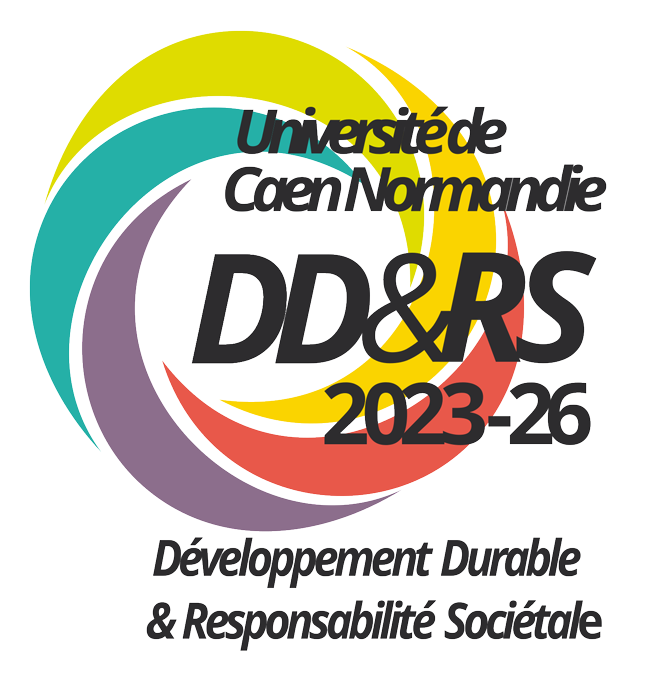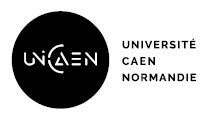The Campus 30 mission
The main goal of Campus 30, the university’s sustainable development mission, is to develop, monitor and evaluate the university’s sustainable development strategy and its action plan. Through its training courses, research programs and practices, the university intends to take responsibility and to fully contribute to the changes that are necessary for our society.
A long-standing commitment
The University of Caen Normandy initiated its sustainable development policy in 2013/14, with the Campus 21 mission. At that time, an inventory of existing practices in favour of more sustainable development was carried out, leading to the establishment of an action plan to make progress on the various items of the Plan Vert (Green Plan) (national roadmap for higher education establishments). | Diagnostic Campus 21 (in French)
In November 2020, a new impetus in favour of sustainable development and societal responsibility (SD&SR) was given to develop and monitor an ambitious SD&SRpolicy for the years to come, with a resolute commitment to ecological, energy, environmental, societal and digital transitions. The Campus 21 mission became the Campus 30 mission, and the Green Plan was transformed into the SD&SR framework. A diagnosis was carried out to take stock of the actions undertaken and to submit an action plan: many projects have progressed or been completed, and new challenges have emerged. | Diagnostic Campus 30 (in French)
A sustainability label and a highly positive assessment

The University of Caen Normandy has been awarded the Label DD&RS for 4 years. DD&RS stands for sustainable development and social responsibility. This label rewards higher education establishments which are committed to the latter principles. To obtain the Label DD&RS, it is necessary to demonstrate that the progress is real, that it is integrated into the operation of the establishment at all levels, and that it is designed to last in the long term.
Commitments formalized in a master plan
The SD&SER strategy is now set out in a Sustainable Development and Environmental and Social Responsibility Master Plan (SD&SER Master Plan), adopted by the Board of Directors on October 18, 2024. It is structured around six strategic axes: governance, teaching, research, the fight against climate change, quality of life on campus and preservation of the living environment, human and social policy, associated with 23 strategic objectives broken down into 84 actions.
This document is intended to be the cornerstone of the university’s entire SD&SER strategy. All the strategic plans adopted by the university have been taken into account in the drafting of these six areas. The proposed actions and indicators are common to both the SD&SER Master plan and the strategic plans concerned.
SD&SER Master plan (in English)
Ongoing and future projects
Now that the diagnosis is set and the roadmap drawn up, we must keep the momentum of this achievement. To this end, several projects are already underway. Here are the most important ones, but the list is not exhaustive.
Carbon footprint
The university’s carbon footprint was calculated in October 2023, based on 2022 data. The most emitting item is travel and represents 58% of the assessment. This item includes commuting for staff and students, a community of over 30 000 people. Then purchasing represent 18%, assets represent 12%, energy represent 11% and waste represent 1%.
To complete its carbon footprint assessment, the university, by the Campus 30 mission, supports research units in their decarbonisation efforts. This approach begins with the calculation of their carbon footprint, thanks to the “GES 1point5” platform, followed by the establishment of a transition plan. For now, about ten research units have calculated their carbon footprint and two of them have a transition plan.
University’s carbon footprint (in English)
Mobility plan
Still with this goal of decarbonisation, the university have adopted a mobility plan. This mobility plan takes into account the travel habits of staff and students. The first part of the mobility plan includes a diagnostic analysis of the results of a survey on travel habits, as well as a field study (counting bicycles, discussions with students, staff and the departments in charge of mobility in the various towns and conurbations concerned, etc.). The second part comprises an action plan with 26 actions, chosen in consultation with the university community, via an online tool and working groups organised on all the campuses. These actions cover all modes of transport as alternatives to the private car. The action plan resulting from this strategic plan is currently being implemented, with the installation of several bicycle facilities and the organization of awareness-raising workshops such as mobility frescoes, bicycle repair workshops or challenges.
University’s mobility plan (in French); for a summary see objective 4.4 of the SD&SER (page 62)
Waste reduction strategies
Selective sorting has been deployed for several years in corridors and classrooms. It is now being deployed in staff offices, raising awareness at the same time through exchanges with the various departments. The university regularly invites Syvedac, the partner in charge of collecting recyclable waste, to raise awareness among the student community.
By 2027, a large proportion of our university sites will be covered by the special waste collection fee. In order to limit the financial costs that will be generated while reducing our environmental impact, the university will implement an operational waste reduction strategy from 2026 onwards, so that our entire establishment is ready in 2027.
Training students in the challenges of ecological transition
At the start of the 2025 academic year, the university will roll out TEDS teaching for all undergraduate students, in accordance with the French Ministry of Higher Education and Research’s guidelines. A multidisciplinary working group, made up of teacher-researchers from various departments and a technical teaching assistant recruited for the project, is preparing a 20-hour asynchronous distance learning course. Various activities, such as tutored projects and debates, will be proposed to enable students. They will be fully integrated into the school’s degree curricula from the start of the 2028 academic year, thanks to preparatory work with all the departments when the syllabuses are renewed.
Eco-actions
Find out here about all the eco-actions you can easily take at your place of study and/or work. This will help to reduce the university’s environmental footprint and limit the increase in its energy bill.
These eco-actions represent everyday actions which, when added together and multiplied by the number of campus users, have a real impact. With a community of over 35 000 people, every gesture counts! Especially as these are simple things that we probably already do at home.
This eco-actions campaign follows the implementation of the French monitoring system “Écowatt” and the development of the university’s Energy efficiency Plan. Posters and stickers are being displayed in the buildings to encourage our community to be more vigilant.
Electricity
Favouring natural light
As far as possible, I prefer natural light and turn on the electric light when it’s too dim. I also turn it off when it’s no longer needed.
When I leave a room, I make sure the light is off!
Defrosting refrigerators and freezers regularly
It’s not always automatic, but defrosting fridges and freezers regularly helps to keep them running at optimum efficiency and prevents premature wear and tear.
3 mm of frost can add up to 30% to energy consumption.
Lifts and stairs
Lifts should be reserved for people with disabilities and those carrying heavy loads.
It’s good for your health, as it contributes to your daily physical activity. It’s also a good way of preventing heart problems, diabetes and obesity.
Switching off your computer and screens
Leaving the office? Don’t leave your computer on standby, remember to turn it off. The same goes for your screens: turn them off completely by pressing the on/off button rather than leaving them on standby all night or even at the weekend.
A computer on standby consumes the equivalent of 40% of its power consumption when running. (Source: ADEME)
Closing landing doors
Some staircases will have their landing doors closed with stickers indicating that this is an energy-saving operation. Staircases with large glazed surfaces can cause high levels of heat loss. Closing landing doors helps to limit this phenomenon.
By closing the doors of rooms that are not at the same temperature, 6% of the energy needed for heating is saved, while reducing heat loss!
Water
What should I do if I notice a leak?
I tell the maintenance department; I don’t leave the problem to the next person. By e-mail, I indicate the nature of the problem, the campus concerned and the door number, floor and building if I know the name. DPL maintenance department: immobilier.travaux@unicaen.fr
A leaky toilet flush can account for more than 600 liters of water per day, equivalent to the daily consumption of a family of 4! (Source: ADEME)

